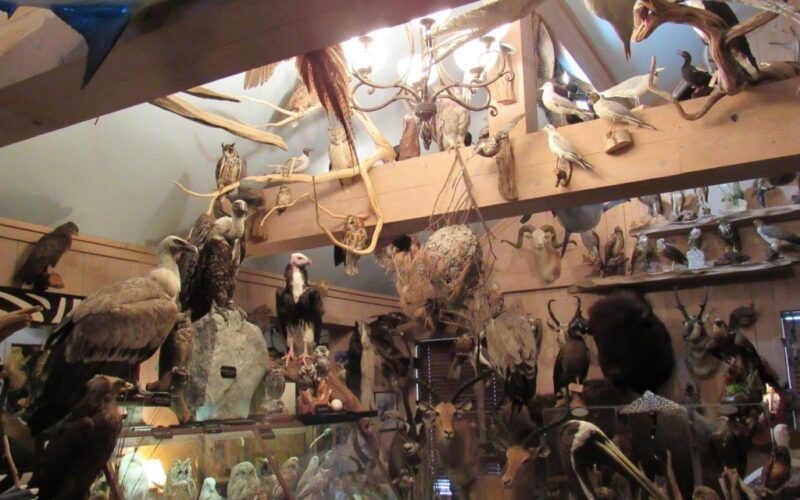An elderly orthopedic surgeon admitted his love of birds turned into a dark obsession, telling a Brooklyn judge that he’s done with collecting stuffed endangered species for good.
John Waldrop, 76, of Georgia, amassed a staggering collection of 1,401 taxidermy mounts and 2,594 eggs, most of them through smuggling or unauthorized means, before federal authorities raided his roost and arrested him in 2023.
On Wednesday, Brooklyn Federal Court Judge Rachel Kovner allowed him to fly free, sentencing him to three years probation and a $900,000 fine.
Prosecutors set up three birds from his collection on a table in the courtroom — a Roseate spoonbill, a Eurasian eagle-owl (the same species as Flaco) and an imperial eagle native to eastern Europe and parts of Asia — positioning them so their eyes pointed directly at the judge.
“I hope that you can appreciate the beauty,” Waldrop drawled. “I look at them as pieces of art and not as mounts.”
Waldrop has forfeited his entire collection, handing the birds and eggs over to the Smithsonian Museum, Cornell University and other zoos and museums, Department of Justice attorney Ryan Connors said.
That collection includes herons, a Muscovy duck and an Elenora’s falcon from Italy, a great gray owl and a boreal owl from Russia.

“He also had three Nordmann’s greenshank [Tringa guttifer] eggs, an Asian shorebird with 900 to 1,600 remaining population,” prosecutors said in an April 2 filing. “No museum in North America has these eggs in its collection, yet the defendant obtained three of them.”
An ornithologist at the U.S. Fish and Wildlife Service’s forensic lab called Waldrop’s collection the largest seizure of bird mounts in the lab’s 37-year history, according to a filing by prosecutors. And the Department of Justice referred to the seizure as the largest-ever bird mount trafficking case.

Waldrop pleaded guilty in August to violating the Endangered Species Act and conspiracy to smuggle goods into the United States.
Prosecutors said he took pains to disguise his identity, going through importers and third-party buyers, and coordinated with suppliers in Africa, Europe and South America to boost his collection over several years.
“I never thought my activities would have adversely affected so many people,” he told the judge. “I have completely given up my obsessive hobby of taxidermy birds.” Instead, he said, he’s taken to collecting wood carvings and painted fake eggs.

Waldrop has turned parts of his 220-acre property near Columbus, Ga., into a wildlife preserve, his lawyer, Paul Fishman, said.
And, according to court filings, he kept his collection in a lake house that he’d often open up to school children, who called it “Dr. Waldrop’s Zoo.”
“My love for birds is extraordinary,” he said. “I will continue to create habitats for them. But my love for them does not excuse my illegal behavior.”
Waldrop’s vast smuggling efforts prevented the scientific community from studying the endangered birds, or getting an accurate read on how many of each species exist, Connors said.
“When you bring this into JFK Airport labeled as toys or clothing,” Connors said, “then the numbers, the classification system doesn’t work.”
The case was held in Brooklyn court since some of the contraband shipments were intercepted at JFK. The investigation was led by the U.S. Fish and Wildlife Service’s Valley Stream, Long Island, office.
An accomplice, Toney Jones, 55, of Alabama, was sentenced to six months probation.
After the sentencing, prosecutors wrapped the three stuffed birds with green bubble wrap, put them in cardboard boxes and covered them with garbage bags.
Originally Published:








